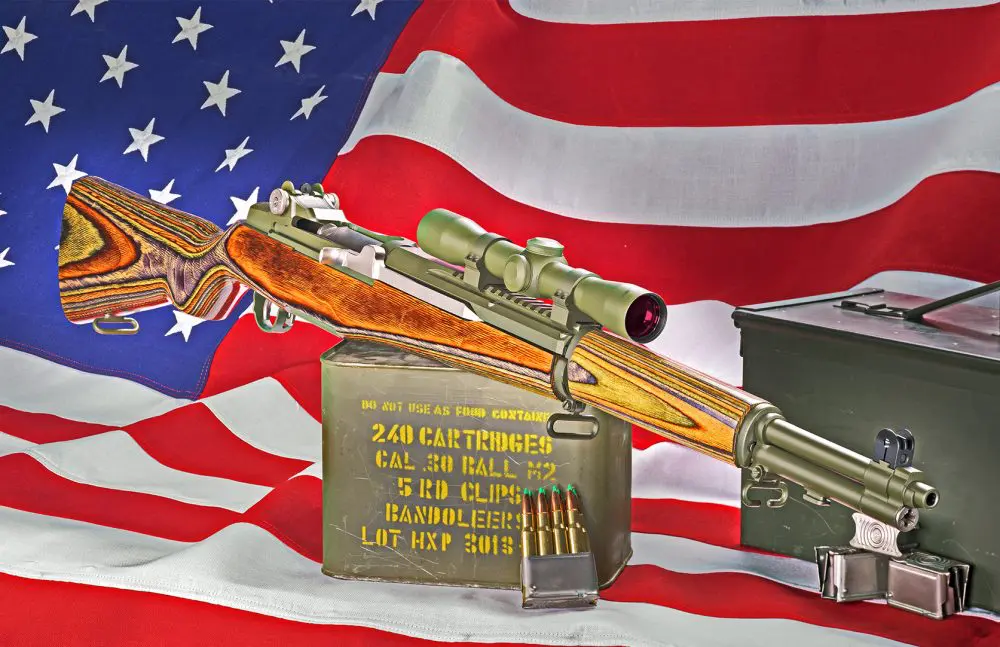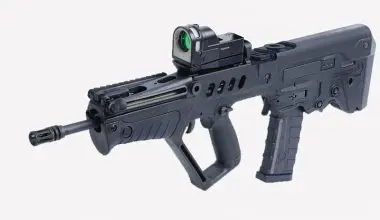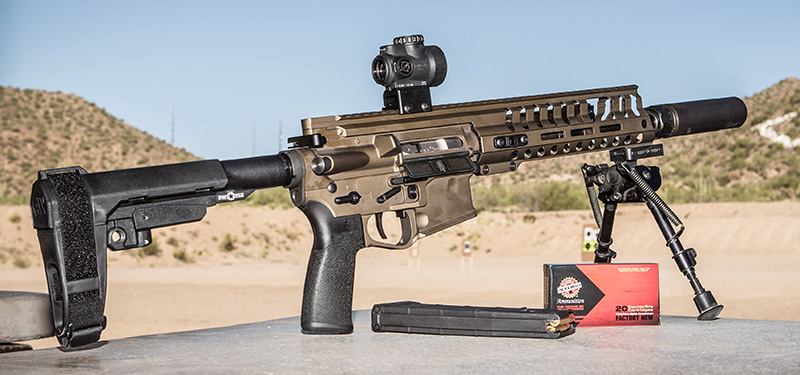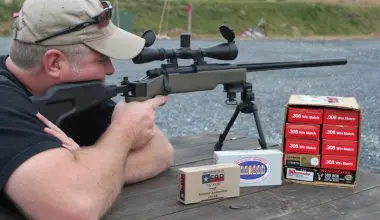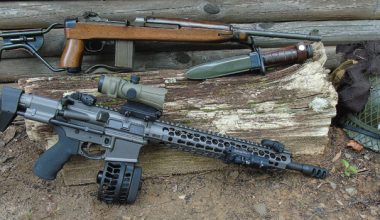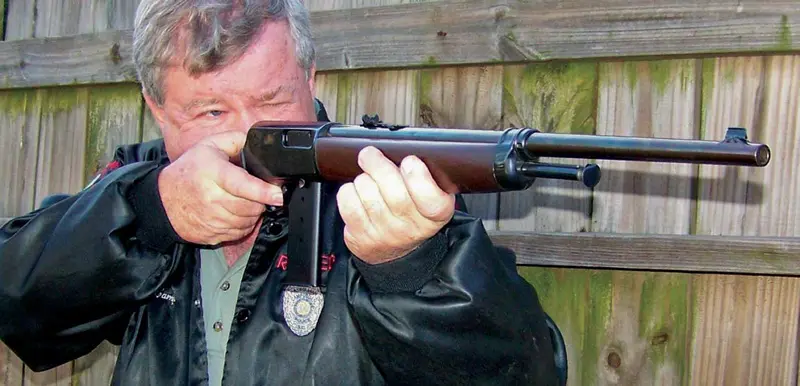

A lever-action rifle is sufficient to solve most problems, and the .308 rifle will do things that the .223 cannot. A properly glassed bolt-gun is more versatile than most shooters realize. But the handy go-anywhere, doanything rifle—that’ll drop a mad steer or handle a gang situation—is a tough niche to fill.
A couple of generations ago, practically every police agency had on hand a rack of Winchester Model 94 .30-30 WCF rifles. The lever-action rifles could handle a barricaded gunman and cut through vehicle sheet metal like nobody’s business. I’d rather have such a rifle than anybody’s pistol-caliber carbine.
But were there even better cop rifles that were once popular? Are we missing something? I believe we are.
Table of Contents
THE SEARCH IS ON
Beginning in 1906 with the Remington Model 8 rifle and later with the Winchester Model 1907 rifle, the best selfloaders ever produced for general police use and self-protection were introduced. Arguably we have not seen their like since the Winchester was discontinued in 1957. The Remington was out of production a decade earlier.
Unlike most modern self-loaders in use by police forces, neither of these rifles were true military designs. They were designed for use right here in North America, not against foreign enemies, although the Winchester saw limited use by the French, Russians and British during World War I.

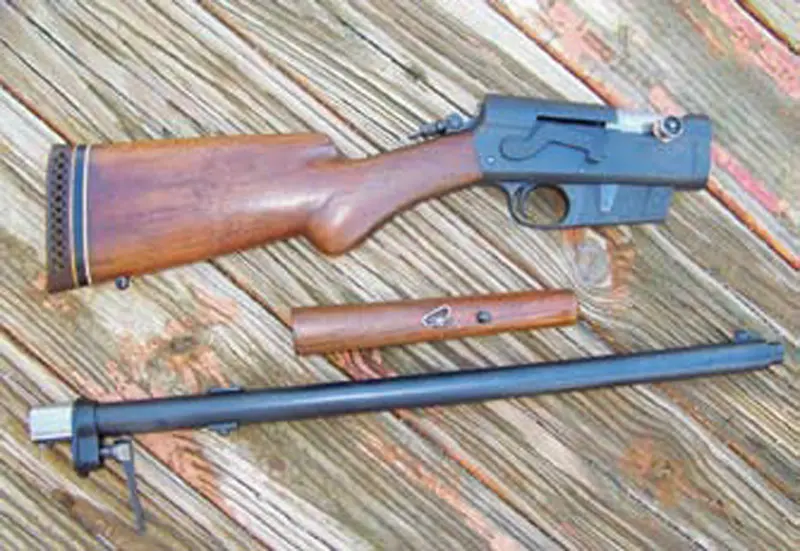
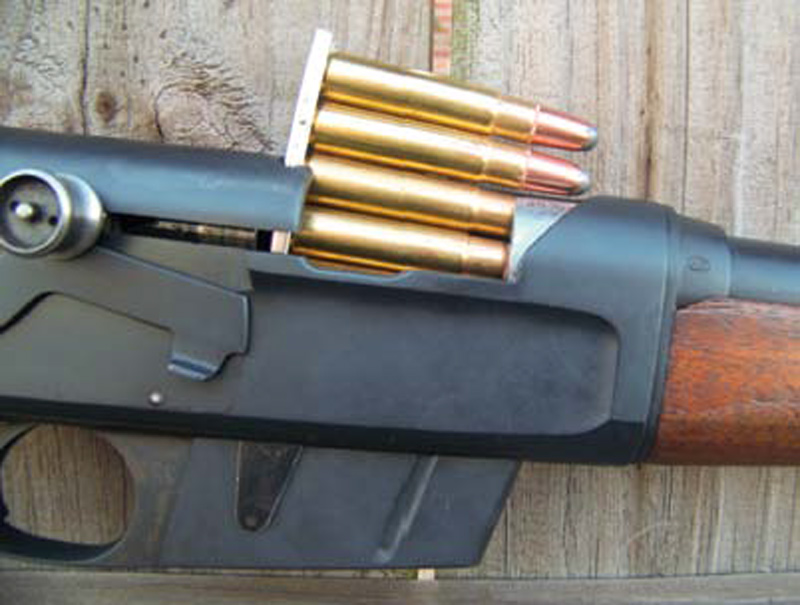

REMINGTON MODEL 8
The Remington Model 8 rifle sprang from John Browning’s patents. This rifle uses a straight recoil system in which the barrel and bolt recoil together. There is no gas system. The barrel moves rearward during the firing cycle inside the barrel shroud.
The Model 8 features a fixed fiveround magazine that is fed in the military manner by a stripper clip. The common 8mm Mauser clip works well. The rifle features a positive safety that locks both the trigger and bolt. The safety is similar to the much later AK-47 design.
My rifle was supplied with a tangmounted aperture sight. The sight may be propped in place and then locked by a positive lock at the base of the sight. The aperture sight and the fast handling characteristics of the Remington Model 8 make for a fine close-range hunting and defense rifle, though the rifle was primarily intended for the outdoorsman.
Ammo
Originally available in .25, .30, .32 and .35 Remington, the rifle was later also offered in .300 Savage caliber, with that chambering the rarest. Of the original Remington calibers, only the .35 Remington is still in production today, and this one is primarily a lever-action rifle cartridge. While ammunition is plentiful, the choice is limited to 180- to 200-grain JSP loads and occasionally the high-velocity 150-grain loading. At present, the Hornady LEVERevolution load, with a 200- grain pointed bullet at 2,200 feet-per-second (fps), is the recommended loading.
A great advantage of the Remington rifle is the ease with which it may be broken down. In the early 1900s, transportation was not as easy as it is today. A take-down rifle was a great asset. Simply screw out the captive screw in the forend and remove the forend. There is a lever in the front of the receiver that is screwed in counterclockwise to separate the barrel and receiver. The 41-inch Remington is then separated into two more or less equal halves, with the 22-inch barrel being the longest. When you disassemble this rifle, you will note that the bolt and extractor are very robust. The claw extractor in particular seems well made and of good material.
This rifle’s firing sequence is a little strange to those used to gas-operated actions. The barrel recoils to a degree, along with the bolt and bolt carrier. When the bullet exits the barrel and pressure abates, the bolt travels to the rear and ejects the spent cartridge. A fresh round is then stripped from the magazine. A crisp four-pound trigger action gives the shooter every advantage. I would be well prepared for hunting wild boar at moderate ranges or deer to about 100 yards with this rifle.
While five rounds may be cutting it short in a defensive encounter, the fact is that these rounds have about a ton of muzzle energy each and plenty of penetration to solve a problem. The Model 8 was a formidable tool. I can understand its popularity.
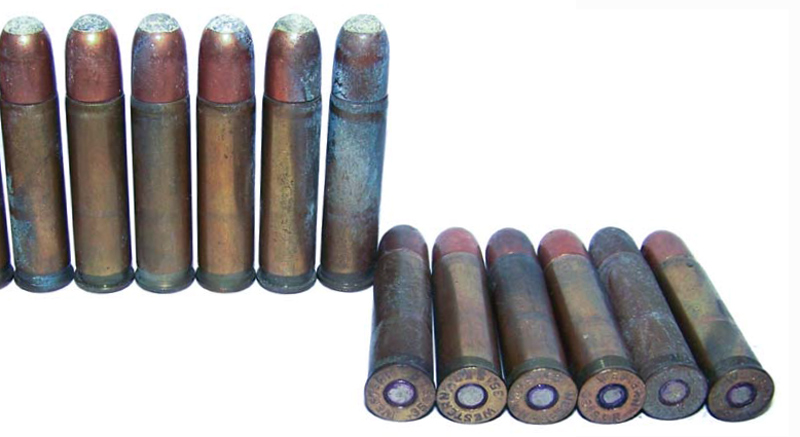
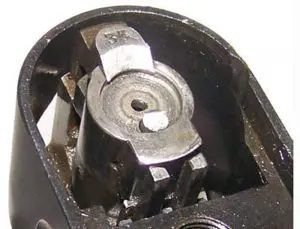
WINCHESTER MODEL 1907
The Winchester is interesting from a mechanical standpoint. At first look, the slim lines of the Winchester appear simple, but the rifle is complicated. A product of the design shop of T.C. Johnson, the Winchester is a straight blowback design. The bolt simply blows back off the chamber on firing. As a result, the recoil spring is very strong and cocking requires some effort. There is also a counterweight under the forend to aid in function.
The cocking bar for the ‘07 is located under the barrel. By pressing the cocking bar to the rear, the rifle is cocked. If the cocking bar is turned to one side, the bolt may be locked to the rear. There is no last shot hold-open notch.
While this action is certainly different, the bolt style safety is located handily in front of the trigger guard. This rifle features a detachable five-round magazine. Ten-round magazines were once plentiful but now command a C note or better on the used market. Triple K Manufacturing offers a modern reproduction ten-round magazine. Although solidly made of quality material, our magazine demanded a slight trimming of metal in order to feed the bullet nose into the chamber. Triple K magazines are inexpensive enough that obtaining a couple in order to augment the firepower of the Winchester is a reasonable option.
My impression is that the Winchester rifle is more of a personal-defense rifle than the Remington. The Winchester served in France during World War I with the French Army and on a limited basis with the British. The consensus from period literature is that the rifle doesn’t malfunction.
Ammo
The .351 Winchester Self-Loading (WSL) cartridge isn’t powerful by modern standards, but it certainly hits harder than the later .30 carbine and approximates the .357 Magnum in the rifle. Original ballistics call for a 180-grain JSP at 1,800 fps. You cannot load hotter or you will batter the action—slower, and the loads may not function. The actual average velocity for the .351 is closer to 1,700 fps.
The problem with .351 Winchester ammunition is availability. The .351 WSL has not been a regular production item in well over 35 years. Custom ammunition is made by using a lathe to remove the case rim of the .357 Remington Maximum cartridge and cut an extractor groove into the case.
As a result, the average price for .351 WSL rounds hovers at around $1.50 per shot. It is about as expensive to obtain this ammunition as good quality .405 Winchester ammunition. When the rifles were new, the situation was reversed, with 50-round boxes of .351 WSL reasonably priced. Custom loading dies are now available and a special swager to swage .357 bullets to .351 inch can be obtained. You really have to love the ‘07 to do this.
I was able to obtain good-quality modern production loads from Load X ammunition. Using a 180-grain bullet, these loads proved accurate, reliable and powerful enough to cycle the action reliably. Powder burn was also good. Since the .351 rifle is a blowback, the recoil impulse is nearly as great as the Remington. Not bad, but more than we would expect from this rifle.
Firing the Winchester is a joy. The trigger is a bit heavy at over five pounds, but I was able to get X ring hits on demand well past 25 yards. Using a solid rest from cover, it was no mean feat to fire a fiveround group of two to three inches at 50 yards. The .351 is easy to use well and it hits hard. I am certain the effect of the .351 on targets—including those behind light cover—exceeds that of any service handgun cartridge.
CONCLUSIONS
These rifles are interesting links with history. Both were formidable cop and guard guns in their day. I am pretty certain the low bid was the tie breaker in many instances.
If I were in a tall guard tower ready to stop a prison break—which often included help from the outside—the powerful and accurate Remington Model 8 would have been my first choice.
If engaged in fast-moving pursuits of heavily armed gangs, the Winchester ‘07 was controllable and could put a lot of lead into a target quickly.
It’s fun to think about the choices we may have had in 1907 or so, but today the ammunition situation makes the Remington Model 8 the most practical choice.
However, both are proven rifles with quite a heritage. When you look at either with a clear eye, it’s obvious that these fast-handling rifles are capable of dealing with 90% of the police problems we might face in this century. They are powerful, reliable and accurate for the tasks at hand.
In their day, they were inexpensive. We will never see their like again.
